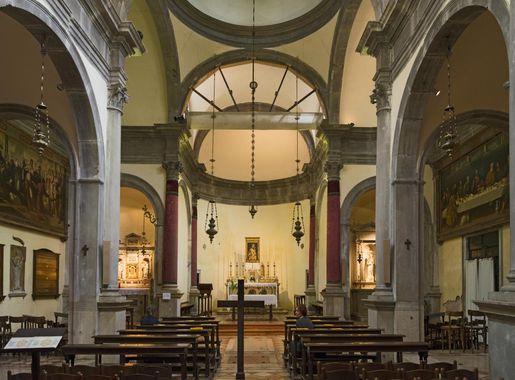
Santa Croce: The Hidden Heart of Venice
Discover Santa Croce in Venice: A Tranquil Neighbourhood Rich in History, Culture, and Authentic Venetian Charm.
Santa Croce, one of Venice's six sestieri, offers a charming blend of historic allure and vibrant local life. Often overlooked by tourists, this neighbourhood provides a tranquil escape from the bustling crowds of the city’s more famous districts. With its narrow, winding streets, picturesque canals, and quaint bridges, Santa Croce is a place where you can experience the authentic Venetian way of life. The neighbourhood is home to several stunning churches, including the Chiesa di San Giacomo dell'Orio, known for its beautiful frescoes and serene atmosphere. Art enthusiasts will also appreciate the Fondaco dei Turchi, a magnificent palace that now houses the Natural History Museum. The museum's extensive collection showcases Venetian history and the natural world, making it a great stop for families and curious minds alike. Santa Croce is also a food lover's paradise. The area boasts some of Venice's best trattorias and osterias, where you can indulge in traditional Venetian cuisine. Don't miss out on trying local dishes such as sarde in saor (sweet and sour sardines) and bigoli in salsa (a type of pasta). For a true taste of Venice, be sure to visit the bustling local markets where you can find fresh produce, seafood, and regional specialties.
Local tips in Santa Croce
- Wear comfortable shoes as the neighbourhood’s cobblestone streets can be uneven and narrow.
- Visit early in the morning to enjoy the serene atmosphere before the day’s activities begin.
- Bring a map or use GPS, as the winding streets can be confusing for first-time visitors.
- Try to learn a few basic Italian phrases to enhance your interactions with local vendors and residents.
- Don't forget to carry cash, as some smaller shops and eateries may not accept credit cards.
Santa Croce: The Hidden Heart of Venice
Santa Croce, one of Venice's six sestieri, offers a charming blend of historic allure and vibrant local life. Often overlooked by tourists, this neighbourhood provides a tranquil escape from the bustling crowds of the city’s more famous districts. With its narrow, winding streets, picturesque canals, and quaint bridges, Santa Croce is a place where you can experience the authentic Venetian way of life. The neighbourhood is home to several stunning churches, including the Chiesa di San Giacomo dell'Orio, known for its beautiful frescoes and serene atmosphere. Art enthusiasts will also appreciate the Fondaco dei Turchi, a magnificent palace that now houses the Natural History Museum. The museum's extensive collection showcases Venetian history and the natural world, making it a great stop for families and curious minds alike. Santa Croce is also a food lover's paradise. The area boasts some of Venice's best trattorias and osterias, where you can indulge in traditional Venetian cuisine. Don't miss out on trying local dishes such as sarde in saor (sweet and sour sardines) and bigoli in salsa (a type of pasta). For a true taste of Venice, be sure to visit the bustling local markets where you can find fresh produce, seafood, and regional specialties.
Iconic landmarks you can’t miss
Museo di Storia Naturale Giancarlo Ligabue
Explore the fascinating Museo di Storia Naturale Giancarlo Ligabue, where the secrets of natural history come to life in the heart of Venice.
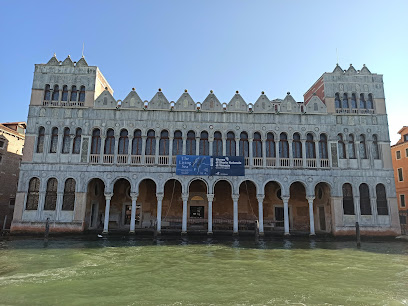
Giardini Papadopoli
Discover the tranquility of Giardini Papadopoli, a hidden gem in Venice, where lush greenery meets picturesque canals, perfect for relaxation and exploration.
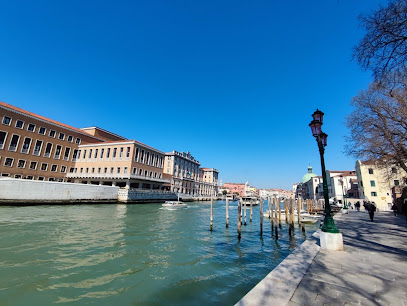
Mocenigo Palace-Museum
Experience the opulence of Venetian nobility at Mocenigo Palace-Museum, where history, art, and culture converge in a stunning 18th-century setting.
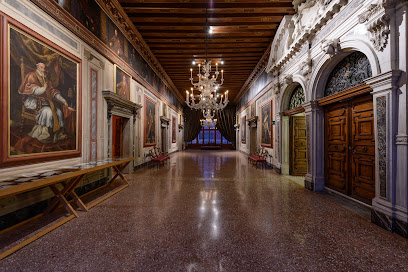
Monument to Paolo Sarpi
Explore the Monument to Paolo Sarpi in Venice, a stunning tribute to the city's rich history and cultural heritage amidst vibrant surroundings.
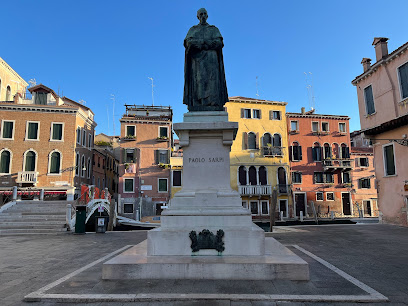
Venice
Explore the timeless beauty of Venice, a city of canals, art, and romantic charm, where every corner reveals a piece of history.
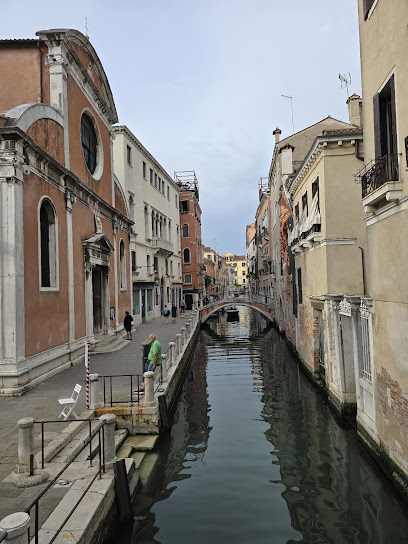
Statua dell'Immacolata Vergine Maria
Discover the beauty and serenity of the Statua dell'Immacolata Vergine Maria, an exquisite monument in the heart of Venice, celebrating faith and artistry.
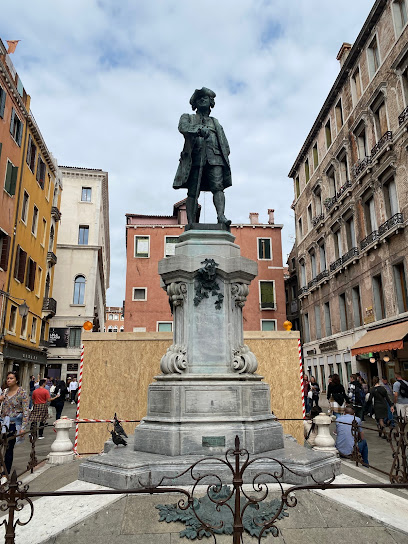
Fondaco dei Turchi
Explore Fondaco dei Turchi, a historic landmark in Venice showcasing the city's rich cultural heritage and stunning architectural beauty.
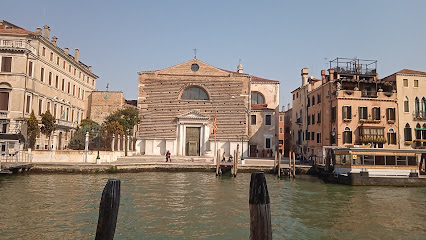
Colonna dell'ex-chiesa di Santa Croce
Discover the charm of Venice at the Colonna dell'ex-chiesa di Santa Croce, a historical landmark steeped in rich architectural heritage.
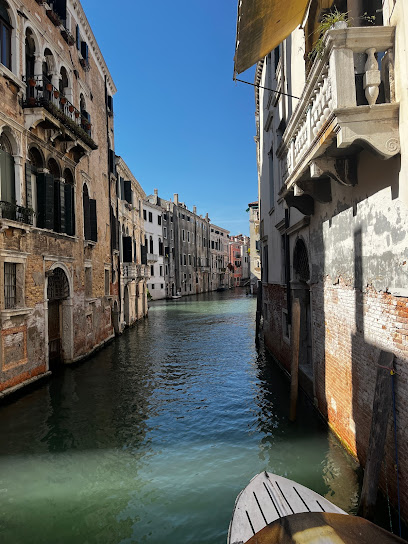
Sestiere Santa Croce
Discover the hidden gems of Sestiere Santa Croce, a historic district in Venice with stunning canals, rich culture, and authentic Venetian experiences.

Giudecca, Calle de la Croce
Discover the serene beauty of Giudecca, Calle de la Croce in Venice, where history and culture blend seamlessly along enchanting canals.
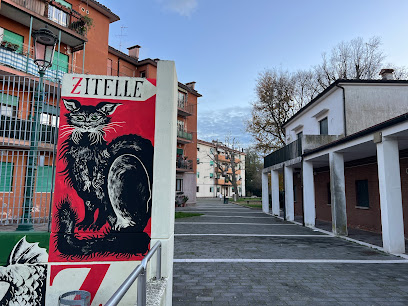
Piazzale Roma inicio
Experience the vibrant atmosphere of Piazzale Roma, Venice's main gateway, blending historical charm with modern convenience amidst stunning architecture.

Fundamental Papadopoli
Explore the tranquil beauty of Fundamental Papadopoli, a serene canal-side attraction in Venice, perfect for capturing unforgettable memories.
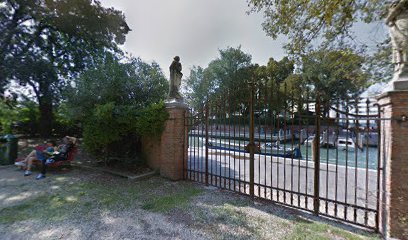
Unmissable attractions to see
Rialto Bridge
Explore the iconic Rialto Bridge in Venice, a stunning architectural marvel connecting rich history with vibrant local culture along the Grand Canal.
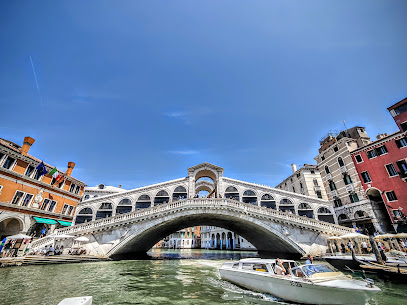
Doge's Palace
Discover the enchanting Doge's Palace, a masterpiece of Gothic architecture and a treasure trove of Venetian history and art.
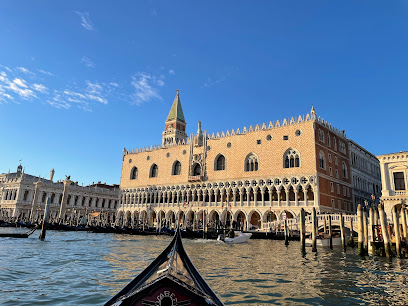
Saint Mark's Basilica
Discover the stunning mosaics and rich history of Saint Mark's Basilica, an architectural masterpiece in the heart of Venice.
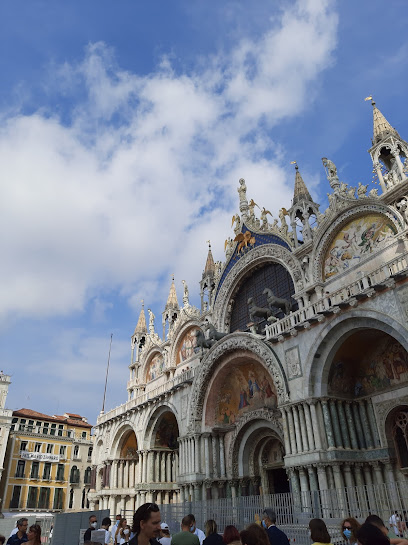
Museo di Storia Naturale Giancarlo Ligabue
Discover the rich tapestry of natural history at the Museo di Storia Naturale Giancarlo Ligabue, an essential stop for tourists in Venice.
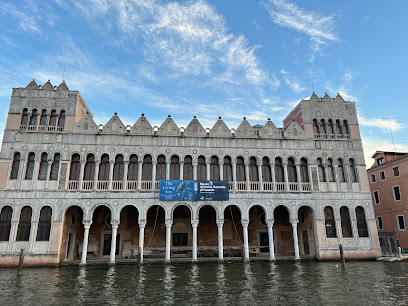
Giardini Papadopoli
Explore Giardini Papadopoli, Venice's serene park, a perfect blend of nature, history, and tranquility in the heart of the city.
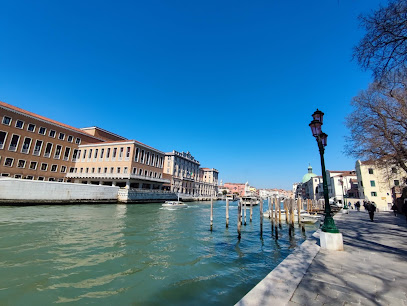
Galleria Giorgio Franchetti alla Ca' d'Oro
Explore the Galleria Giorgio Franchetti alla Ca' d'Oro, a stunning art museum in Venice showcasing exquisite Venetian masterpieces and breathtaking canal views.

Mocenigo Palace-Museum
Explore the Mocenigo Palace-Museum, a hidden gem in Venice showcasing exquisite textiles and the art of perfumery in a stunning historic setting.
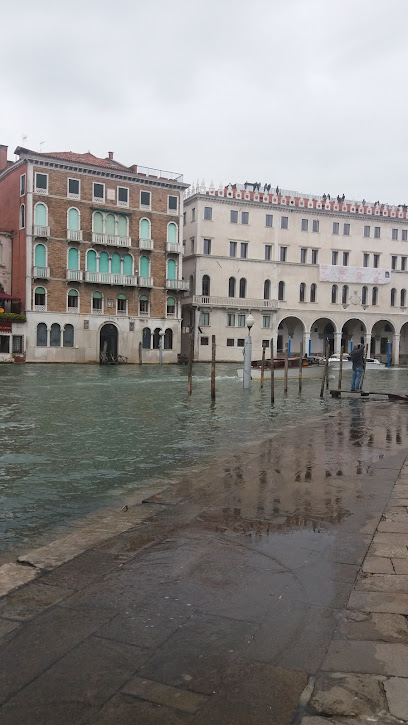
Venice
Discover the magic of Venice, a city of canals, art, and history that enchants every traveler with its timeless charm.
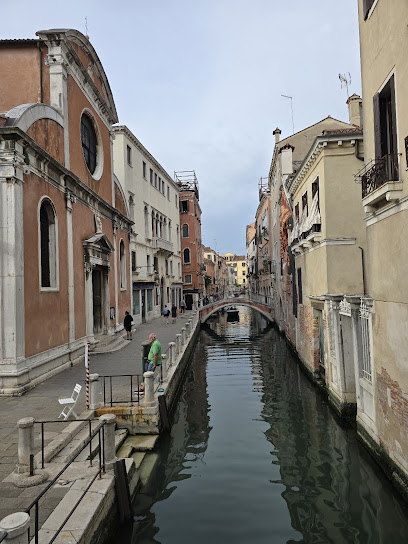
Fundamental Papadopoli
Experience the serene beauty of Venice at Fundamental Papadopoli, a charming canal-side promenade that captures the essence of Venetian life.

Fondamenta dei Tolentini
Explore the serene Fondamenta dei Tolentini, a hidden gem in Venice's enchanting canals, offering stunning views and a taste of local life.
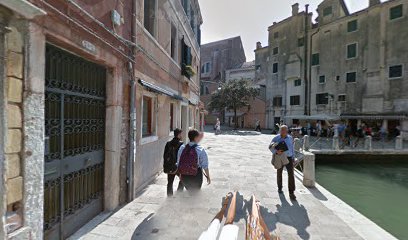
Essential places to dine
Rio Novo
Experience the best seafood dining in Venice at Rio Novo - where tradition meets innovation in every delectable dish.
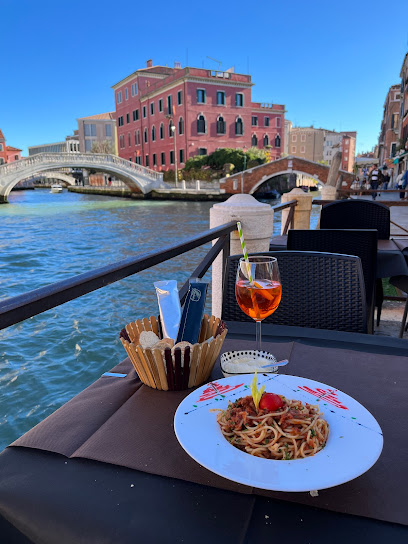
Bacaro Quebrado
Experience authentic Venetian cuisine at Bacaro Quebrado - where tradition meets flavor in the heart of Venice.
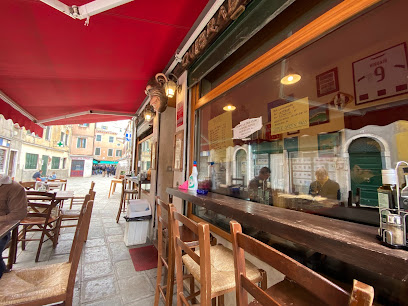
Al Nono Risorto
Discover Al Nono Risorto: A delightful Italian restaurant in Venice serving authentic pizzas and traditional dishes in a charming setting.
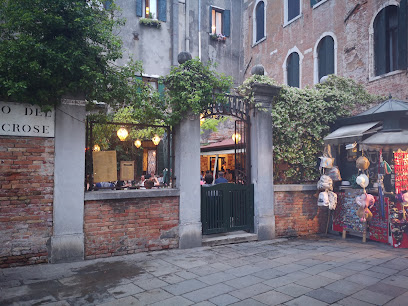
La Zucca
Experience authentic Venetian cuisine at La Zucca, where tradition meets flavor in a charming setting.
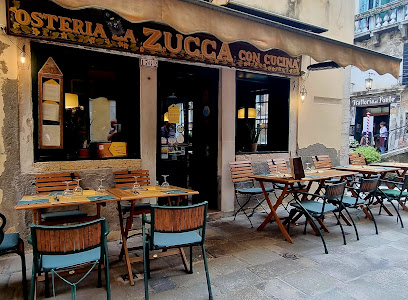
Osteria Mocenigo
Experience authentic Venetian cuisine at Osteria Mocenigo – where every dish reflects Italy's rich culinary tradition.
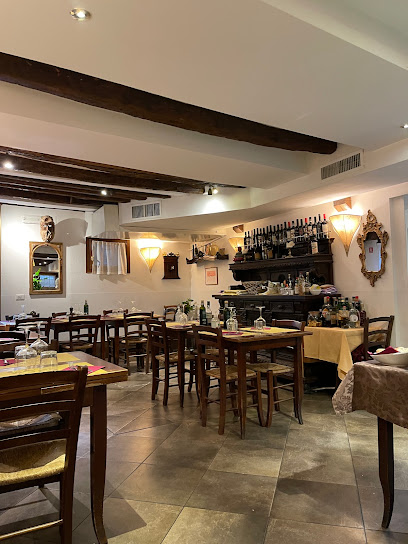
Hostaria Venexiana
Discover exquisite seafood dining at Hostaria Venexiana in Venice – where culinary tradition meets modern flavors.

La Lanterna Da Gas
Discover authentic Venetian seafood at La Lanterna Da Gas, where tradition meets flavor in a cozy dining experience.

Osteria Leone Alato
Experience authentic Italian flavors at Osteria Leone Alato in Venice – where every meal tells a story of tradition and passion.
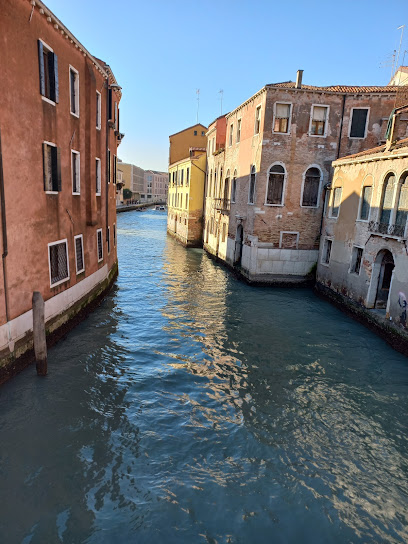
Ai Garzoti
Experience authentic Italian flavors at Ai Garzoti in Venice – where every meal is a celebration of culinary tradition and fresh ingredients.
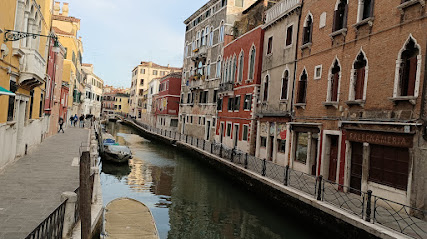
Ristorante Caffè dei Fiorì/fresh fish seafood
Savor authentic Venetian seafood at Ristorante Caffè dei Fiorì - where fresh fish meets Italian tradition in a cozy setting.
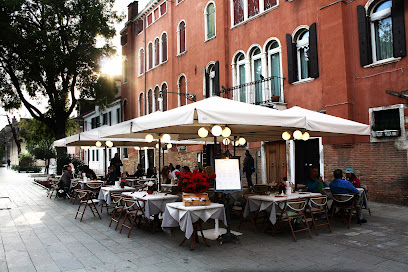
Markets, malls and hidden boutiques
Vintageria Venezia
Discover unique vintage fashion treasures at Vintageria Venezia, a charming store in the heart of Venice offering a sustainable shopping experience.
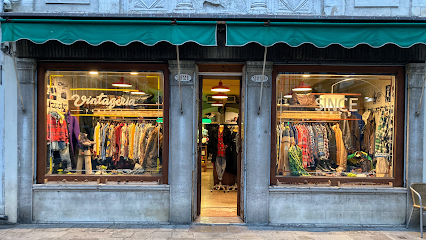
Benor Maschere
Explore Benor Maschere, a captivating craft store in Venice known for its exquisite handmade masks and unique Venetian artistry.
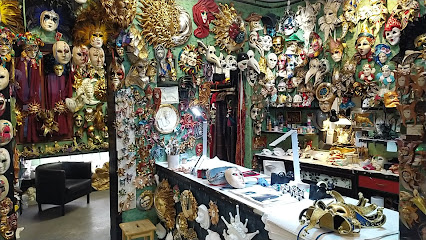
Bottega del Mondo
Explore Bottega del Mondo for unique, handcrafted clothing that captures the essence of Venice's rich culture and artistry.
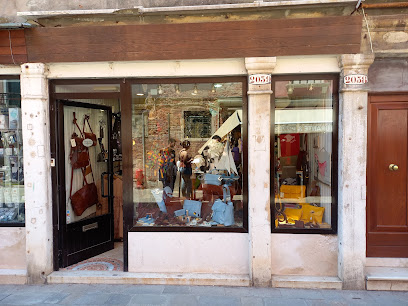
Negozi di souvenir
Explore the enchanting Negozi di souvenir in Venice for unique handcrafted treasures that capture the essence of this historic city.
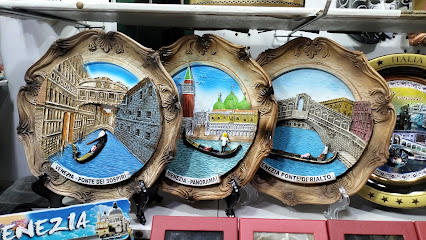
Discount Gift Shop
Explore Venice's Discount Gift Shop for unique souvenirs and handcrafted treasures that capture the city's rich culture and artistry.
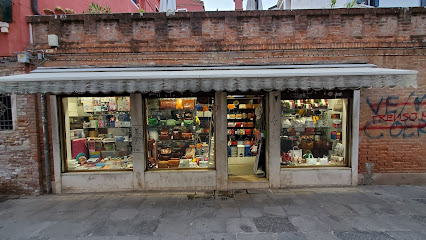
Italian Style
Explore the essence of Italian craftsmanship at Italian Style Boutique in Venice, where every handbag tells a story of elegance and artistry.
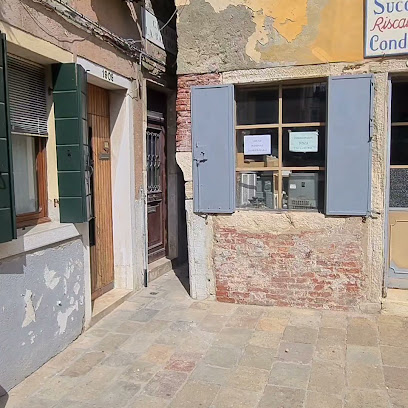
The Venice choker
Explore the enchanting jewelry collections at The Venice Choker, where Venetian artistry meets elegant design in a captivating shopping experience.
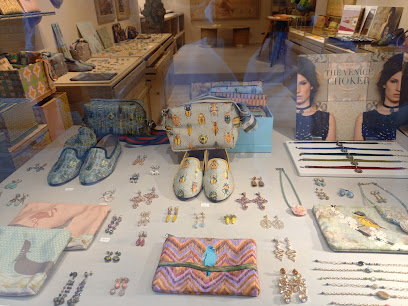
Artigianato Veneziano
Discover the essence of Venice through exquisite handmade crafts at Artigianato Veneziano, a unique souvenir store showcasing local artistry.
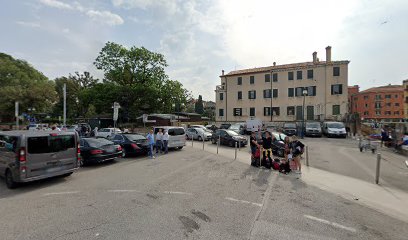
rialto bridge
Discover the enchanting beauty and vibrant culture at the Rialto Bridge, Venice's iconic landmark for shopping and stunning views.
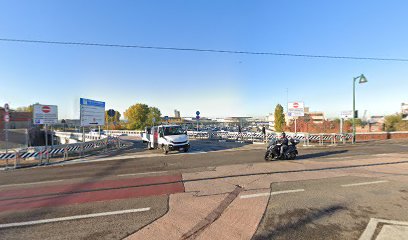
VeneziArt Shop
Explore the unique fashion accessories at VeneziArt Shop, where Venetian craftsmanship meets modern style in a charming setting.
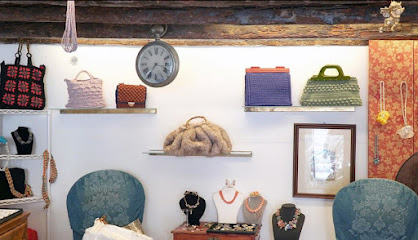
Essential bars & hidden hideouts
Arcicchetti Bakaro
Discover the authentic Venetian experience at Arcicchetti Bakaro, a charming bar offering delightful drinks and local flavors in the heart of Venice.
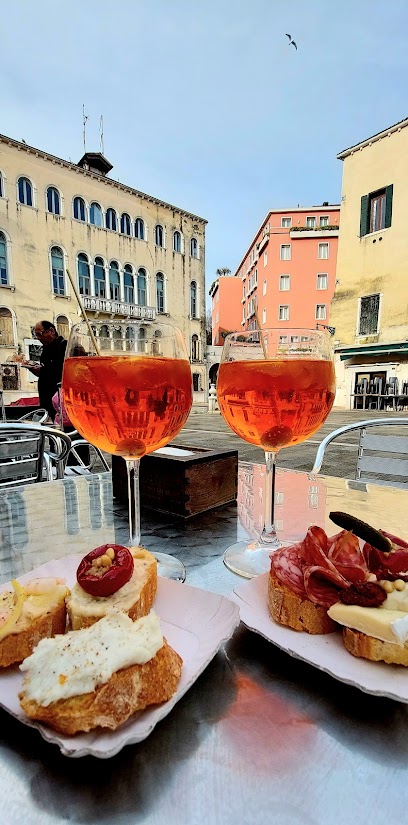
BAR Da Giosia chiosco
Discover the vibrant atmosphere and exquisite drinks at BAR Da Giosia, a must-visit bar in the heart of Venice for every traveler.
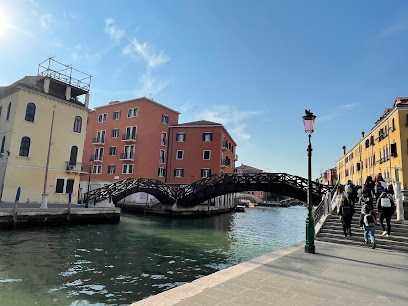
Bar Due Ruote
Discover the charm of Bar Due Ruote in Venice, where friendly service meets authentic Italian drinks and breathtaking canal views.
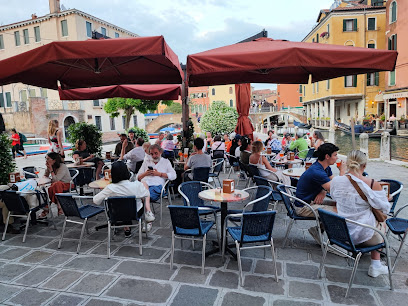
Al Prosecco
Discover the charm of Al Prosecco, a delightful wine bar in Venice's Sestiere Santa Croce, perfect for savoring local wines and Venetian delicacies.
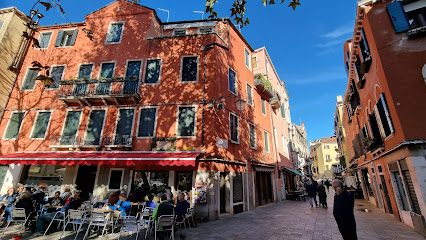
Bar Barbari
Experience the essence of Venice at Bar Barbari, where traditional Italian drinks and warm hospitality await you.

Bar Rosa
Experience the cozy ambiance and delightful drinks at Bar Rosa, a charming bar nestled in the heart of Venice, Italy.
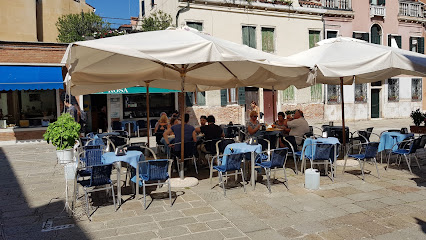
Easy Bar
Discover Easy Bar in Venice: a charming bistro and bar offering delightful drinks and light bites in an intimate setting.
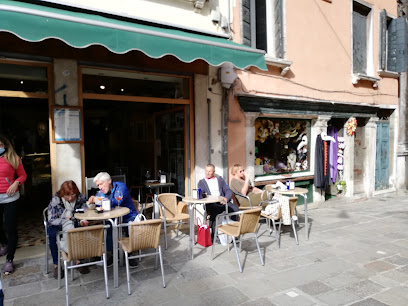
Al Fortino
Experience the essence of Venetian nightlife at Al Fortino, where exquisite drinks and local charm come together in a cozy bar setting.

Boutique Lounge Bar
Experience the vibrant nightlife of Venice at Boutique Lounge Bar, where exquisite cocktails meet a cozy atmosphere in a historic setting.
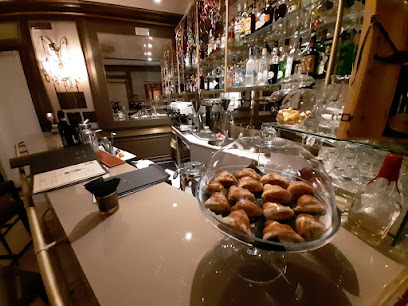
Wine Bar
Discover the charm of a cozy Venetian wine bar, offering exquisite Italian wines and a taste of local culture in the heart of Venice.

Local Phrases
-
- HelloCiao
[chow] - GoodbyeArrivederci
[ah-ree-veh-dehr-chee] - YesSì
[see] - NoNo
[noh] - Please/You're welcomePer favore/Prego
[pehr fah-voh-reh/preh-goh] - Thank youGrazie
[grah-tsyeh] - Excuse me/SorryScusa/Mi dispiace
[skoo-sah/mee dee-spyah-cheh] - How are you?Come stai?
[koh-meh stah-ee] - Fine. And you?Bene. E tu?
[beh-neh. eh too] - Do you speak English?Parli inglese?
[pahr-lee een-gleh-zeh] - I don't understandNon capisco
[nohn kah-pee-skoh]
- HelloCiao
-
- I'd like to see the menu, pleaseVorrei vedere il menù, per favore
[vohr-reh veh-deh-reh eel meh-noo, pehr fah-voh-reh] - I don't eat meatNon mangio carne
[nohn mahn-joh kahr-neh] - Cheers!Salute!
[sah-loo-teh] - I would like to pay, pleaseVorrei pagare, per favore
[vohr-reh pah-gah-reh, pehr fah-voh-reh]
- I'd like to see the menu, pleaseVorrei vedere il menù, per favore
-
- Help!Aiuto!
[ah-yoo-toh] - Go away!Vai via!
[vah-ee vee-ah] - Call the Police!Chiamate la polizia!
[kyah-mah-teh lah poh-lee-tsya] - Call a doctor!Chiamate un dottore!
[kyah-mah-teh oon doh-toh-reh] - I'm lostMi sono perso
[mee soh-noh pehr-soh] - I'm illMi sento male
[mee sehn-toh mah-leh]
- Help!Aiuto!
-
- I'd like to buy...Vorrei comprare...
[vohr-reh kohm-prah-reh] - I'm just lookingSto solo guardando
[stoh soh-loh gwar-dahn-doh] - How much is it?Quanto costa?
[kwahn-toh koh-stah] - That's too expensiveÈ troppo caro
[eh troh-poh kah-roh] - Can you lower the price?Puoi abbassare il prezzo?
[pwah-ee ahb-bahs-sah-reh eel preh-tsoh]
- I'd like to buy...Vorrei comprare...
-
- What time is it?Che ora è?
[keh oh-rah eh] - It's one o'clockÈ l'una
[eh loo-nah] - Half past (10)Le dieci e mezza
[leh dyeh-chee eh meh-tsah] - MorningMattina
[mah-ttee-nah] - AfternoonPomeriggio
[poh-meh-ree-joh] - EveningSera
[seh-rah] - YesterdayIeri
[yeh-ree] - TodayOggi
[ohd-jee] - TomorrowDomani
[doh-mah-nee] - 1Uno
[oo-noh] - 2Due
[dweh] - 3Tre
[treh] - 4Quattro
[kwah-ttroh] - 5Cinque
[cheen-kweh] - 6Sei
[seh-ee] - 7Sette
[seht-teh] - 8Otto
[oh-toh] - 9Nove
[noh-veh] - 10Dieci
[dyeh-chee]
- What time is it?Che ora è?
-
- Where's a/the...?Dov'è...?
[doh-veh] - What's the address?Qual è l'indirizzo?
[kwahl eh leen-dee-ree-tsoh] - Can you show me (on the map)?Puoi farmi vedere (sulla mappa)?
[pwah-ee fahr-mee veh-deh-reh (soo-lah mahp-pah)] - When's the next (bus)?Quando passa il prossimo (autobus)?
[kwahn-doh pahs-sah eel prohss-see-moh (ow-toh-boos)] - A ticket (to ....)Un biglietto (per ....)
[oon beel-lyeh-toh (pehr)]
- Where's a/the...?Dov'è...?
History of Santa Croce
-
Santa Croce, one of the six historic districts of Venice, has its origins dating back to the early Middle Ages. Initially, it was a marshy area, largely uninhabited, until the 9th century when it began to be developed as the city of Venice expanded. The district's name, meaning 'Holy Cross', is thought to have been derived from an ancient church dedicated to the Holy Cross, which was a significant religious site for the early Venetian population.
-
The Grand Canal, which forms the main waterway through Venice, runs alongside Santa Croce, greatly influencing its development. By the 13th century, Santa Croce became a vital trading hub as merchants and traders established warehouses and homes along the canal. This growth was instrumental in Venice's emergence as a major maritime power during the Middle Ages, facilitating trade with the East and beyond.
-
During the Renaissance, Santa Croce saw significant architectural development, with the construction of notable buildings such as the Church of San Giacomo dell'Orio and the Palazzo Bardi. These structures showcase the unique Venetian Gothic style and reflect the wealth and artistic culture of the time. The district became a blend of residential and commercial spaces, illustrating the vibrant life of Venice during this period.
-
In the 18th and 19th centuries, Santa Croce emerged as a center for cultural and social activities. The district hosted various festivals and local events that celebrated Venetian traditions. The construction of the Scalzi Bridge in 1934 enhanced connectivity to the other districts, further integrating Santa Croce into the cultural fabric of Venice. The area remains known for its vibrant local markets and artisanal shops.
-
In recent decades, Santa Croce has faced challenges related to tourism and environmental changes. Efforts have been made to preserve its historical architecture and maintain the local community's character amidst the influx of visitors. Initiatives focusing on sustainable tourism and cultural heritage preservation are ongoing, ensuring that Santa Croce continues to reflect its rich history while adapting to contemporary needs.
Santa Croce Essentials
-
Santa Croce is easily accessible from other neighborhoods in Venice. From Santa Lucia Train Station, it's just a short walk or a quick Vaporetto ride on Line 1 to the San Stae stop. If you're coming from Piazzo San Marco, take the Vaporetto Line 1 toward Piazzale Roma and disembark at the San Stae stop, which is a short distance from the heart of Santa Croce.
-
Santa Croce is a compact neighborhood best explored on foot. While there are no cars in Venice, public transport is available via Vaporetto (water bus) and Traghetto (gondola ferry). Bicycles are generally not permitted in the historical center, but you can rent one in mainland Venice or nearby islands. Be sure to wear comfortable shoes, as many streets and bridges can be uneven and steep.
-
Santa Croce is generally safe for tourists, but exercise caution in crowded areas, particularly around the bus and train terminals, where pickpocketing can occur. Avoid poorly lit alleys at night and stay vigilant. Areas close to Piazzale Roma and the train station may have higher foot traffic but also a higher incidence of petty crime.
-
In case of emergency, dial 112 for police, fire, or medical assistance. The nearest hospital is Ospedale Civile, located in the nearby neighborhood of Santa Maria della Salute. It is advisable to have travel insurance to cover any medical emergencies. For minor issues, pharmacies are available throughout Santa Croce.
-
Fashion: Do wear comfortable, modest clothing suitable for walking. Don't wear beachwear outside of beaches or pool areas. Religion: Do respect local customs when visiting churches; women should cover their shoulders and knees. Public Transport: Do validate your Vaporetto ticket before boarding. Don't block doors or rush when boarding. Greetings: Do greet with a friendly 'Buongiorno' (Good morning) or 'Buonasera' (Good evening). Don't interrupt locals while they are busy. Eating & Drinking: Do try local cicchetti (Venetian tapas) and enjoy a spritz. Don't eat while walking in crowded areas, as it is considered impolite.
-
To experience Santa Croce like a local, visit the daily market at Campo San Giacomo dell'Orio for fresh produce and local delicacies. Engage with shopkeepers and try some artisanal products. Don't miss the chance to explore lesser-known attractions like the Church of San Nicola da Tolentino and the beautiful gardens of the Giardini della Biennale. For a unique experience, take a stroll along the Fondamenta della Misericordia, where you can find charming bars and eateries frequented by locals.
Trending Landmarks in Santa Croce
-
Museo di Storia Naturale Giancarlo Ligabue
-
Giardini Papadopoli
-
Mocenigo Palace-Museum
-
Monument to Paolo Sarpi
-
Venice
-
Statua dell'Immacolata Vergine Maria
-
Fondaco dei Turchi
-
Colonna dell'ex-chiesa di Santa Croce
-
Sestiere Santa Croce
-
Giudecca, Calle de la Croce
-
Piazzale Roma inicio
-
Fundamental Papadopoli
Nearby Cities to Santa Croce
-
Things To Do in Piran
-
Things To Do in Portorož
-
Things To Do in Verona
-
Things To Do in Izola
-
Things To Do in Rovinj
-
Things To Do in Koper
-
Things To Do in Ravenna
-
Things To Do in Trieste
-
Things To Do in Nova Gorica
-
Things To Do in Sežana
-
Things To Do in Bologna
-
Things To Do in Pula
-
Things To Do in Modena
-
Things To Do in Postojna
-
Things To Do in Rimini








